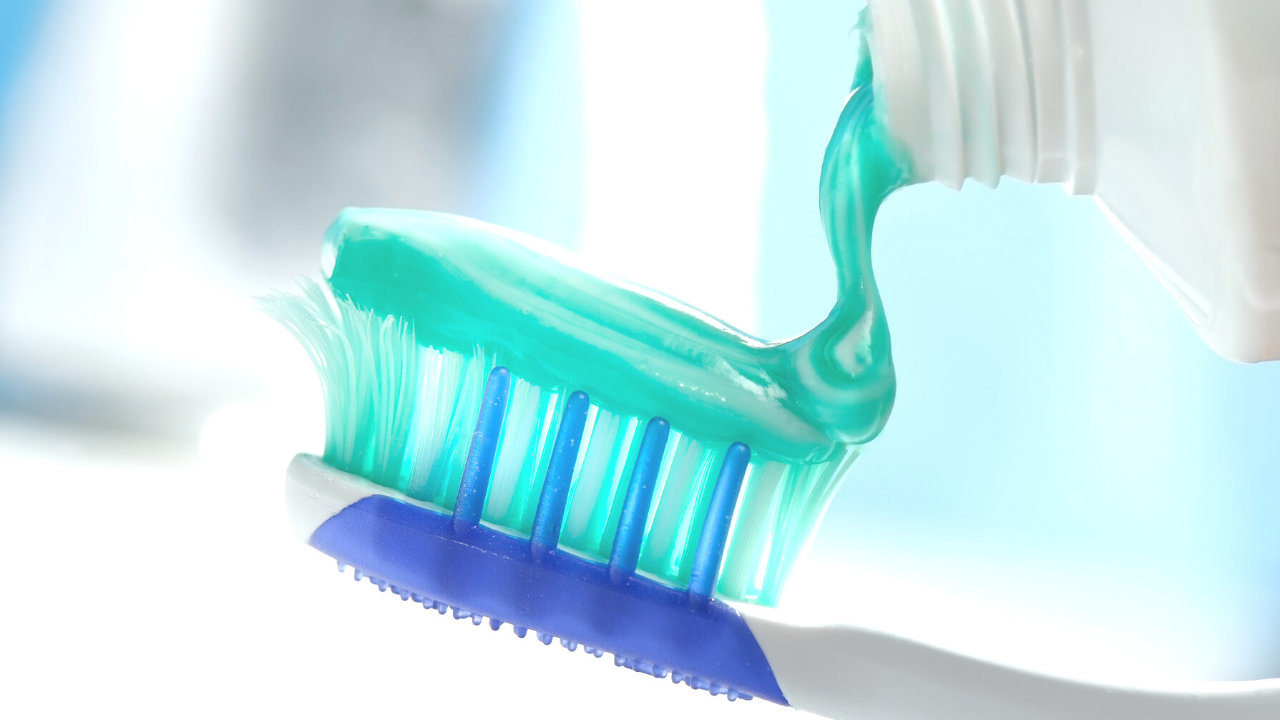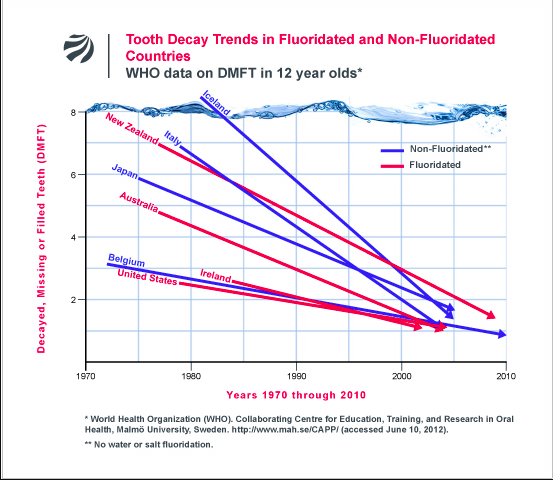Is Fluoride Toothpaste Safe?

Many of us use and ingest fluoride on a daily basis…but is it truly safe when used long-term or in higher concentrations?
This is a highly debated topic with medical and dental professionals found on both sides of the argument. Nobody knows your body like you do - and so the best person to decide whether to use fluoride toothpaste or drink fluoridated water is YOU, in collaboration with your dentist. We are all different and it is important to weigh up the benefits of fluoride vs the potential harm.
In order to help you make an informed decision, I teamed up with my friend and holistic pediatric dentist Dr Staci to dissect the evidence for you. Let’s see what science has to say on the topic of fluoride.
Does fluoride work (on your teeth)?
A Cochrane review confirmed that fluoride toothpaste can prevent cavities better than non-fluoride toothpaste (Walsh, 2019). So, there is evidence that fluoride topically works to prevent cavities. However, is it NECESSARY to prevent cavities?
Well, it depends on the status of your oral microbiome and oral health, your breathing and airway health, your genetics, and your diet.
We have not used fluoride toothpaste as a family for 8 years now and, touch wood, my kids are 13 and 10 with no cavities. Dr. Staci also hasn’t used fluoride toothpaste with her kids and they also don’t have cavities.
That said, IF your risk of cavities is high because of your diet or genetics, you may want to incorporate a fluoride toothpaste to offer some protection - speak to your dentist, and use the minimal amount needed.
Studies have shown that hydroxyapatite can work just as well as fluoride without any negative systemic health effects. (Paszynska, 2021) - so hydroxyapatite containing toothpaste could be something to ask your dentist about (see the brands I like at the end of the blog post).
Now, let’s take a look at the cons and potential harm TOPICAL fluoride can cause:
- Fluoride might disrupt the delicate balance of bacteria in your mouth (oral microbiome) (Wang, 2021), potentially causing harm to our beneficial bacteria.
- Fluoride is present in the oral mucosa for 6 hours after brushing teeth & is very likely absorbed into the bloodstream this way (Larsen, 2019) - so even if you are just using it as a toothpaste, it can be absorbed. Further, over 1/3 of children use too much toothpaste, which means they’re exposed to more fluoride than is considered safe on a daily basis (CDC, 2019).
Estimated typical amounts of fluoride ingested daily from toothpaste are 0.1 mg to 0.25 mg for infants and children aged 0 to 5 years, 0.2 to 0.3 mg for children aged 6–12 years, and 0.1 mg for adults [3]. Fluoride in toothpaste, regardless of its form, is well absorbed [Institute of Medicine, Food and Nutrition Board. Dietary Reference Intakes for Calcium, Phosphorus, Magnesium, Vitamin D, and Fluoride. Washington, DC: National Academies Press; 1997]

What can fluoride do to the rest of the body?
Not only can fluoride be absorbed through our toothpaste, it’s in most of our water (added deliberately to ‘protect our teeth’). So, unless you are using a water filter, you are most likely ingesting it daily through your tap water. Some doctors are still routinely prescribing fluoride supplements, even though the CDC has stated that it’s primary mechanism of action is topical, not systemic, in nature. (CDC 50(RR14);1-42)
Recent large-scale studies from have found little practical or statistical difference in tooth decay rates among children living in fluoridated versus non-fluoridated areas. In addition, data complied by the World Health Organization (WHO) shows that tooth decay rates have declined just as rapidly in non-fluoridated western countries as they have in fluoridated western countries.

So, if the benefit is small or minimal, can we justify the potential harm? A federal judge stated in June 2020 that fluoride posed a “neurotoxic hazard” during an ongoing lawsuit between the EPA and Fluoride Alert. The next court date is set for August 2021 to determine whether or not fluoride is proven safe enough to be in public water supplies. Stay tuned.
As with most environmental toxins, because the exposure is at low doses, the effect is difficult to discern in the short term. However, it is likely that the risk naturally increases with the intensity and duration of the exposure, with long-term exposure more likely to result in more obvious health impacts - however, due to the time lapse, it can be difficult to attribute these impacts to exposures definitively. This is the difficulty with the area of toxicology - we are effectively the lab rats in the study of environmental toxins and oftentimes, the link is not made definitely until ‘more research is done’.
Here we look at some human studies that demonstrate the potential harm fluoride can cause. Fluoride can:
- Cause a condition called fluorosis (teeth mottling) has become more common over recent decades (this is the only side effect of fluoride that you’re going to hear about from most “official” sources) (CDC, 2010)
- Fluoride ingestion has been correlated with lower IQ in children (Till, 2020) - this study compared IQ scores in 398 children in Canada who were formula-fed with water containing fluoride or breast fed during infancy. IQ scores were lower with higher levels of fluoride in tap water.
- Kids and teens who ingest high amounts of fluoride have also been found to have higher rates of ADHD and ADHD-like symptoms (Riddell, 2019 & Malin, 2015)
- Fluoride in water may negatively impact the production of 2 thyroid hormones (TSH + T3) and may worsen hypothyroidism (Kheradpisheh, 2018)
- Chronic fluoride ingestion can cause damage to our kidneys (Dharmaratne, 2018)
So, what’s my take on whether fluoride toothpaste is necessary and do I personally use fluoride toothpaste?
Here’s what we think - Cavities and oral disease occur because of diet (refined sugars, frequent eating), poor hygiene, mouth breathing, and sometimes genetic components. So, the key is working to remove lifestyle factors that contribute to cavity formation (some tips below), and if you do have genetic predispositions towards cavities, by all means, work with your dentist to protect your teeth with topical fluoride, and maybe discuss alternatives like hydroxypatite with them as there is good evidence it works well to remineralize teeth. If you do use fluoride toothpaste, use the minimal amount needed and spit/rinse well!
According to the evidence, fluoride ingestion is something we should be reconsidering — especially for pregnant mamas and growing children. While systemic fluoride exposure gets most of the attention, the likelihood of fluoride absorbing through our oral mucosa and accumulating over time from topical exposures should not be ignored and further research is needed.
Here are some tips to help prevent cavities:
- Reduce processed foods, specifically refined sugars and flours
- FLOSS and brush daily, eat on a schedule instead of grazing all day (ideally with only plain water in between)
- Ensure proper nasal breathing (mouth breathing can lead to cavities)
- Eat nutrient dense and whole foods that support dental development
- Avoid harsh chemicals in products (yep, I’m talking about those oral rinses) as they can disrupt our oral microbiome
- visit your dentist at least twice a year to ensure optimal oral health.
The two non-toxic toothpaste that contains 15-18% hydroxyapatite that we both like are:
P.S - did you know that your dental floss can be coated with PFAS, the toxic chemical that makes up the non-stick coating on Teflon? Yikes! Steer clear of brands that promise 'easy glide', like Glide by Oral B. I use the floss from both of these brands because they do not contain PFAS.
The floss from Boka does not fray and so is easier to use. It has a vegetable wax coating.
About my co-author:
Dr Staci - Dr. Staci attended Tufts University School of Dental Medicine, and founded NoPo Kids Dentistry with a mission to practice a whole-body approach to dentistry. She became a Diplomate of the American Board of Pediatric Dentistry in 2012 and is a Board-Certified Pediatric Dentist and a Fellow of the American Academy of Pediatric Dentistry. She is also involved in many organized dentistry groups including the Holistic Dental Association, the International Academy of Oral Medicine and Toxicology, the International Academy of Biological Dentistry and Medicine, the American Association of Ozonotherapy, and has her Certification in Laser Proficiency. She has taken numerous courses and training in children’s sleep and airway medicine, studying oral myofunctional therapy, craniosacral therapy, functional nutrition and is a Breathe Institute Ambassador.
Sources:
PMID: 30829399
PMID: 33536555
PMID: 31307037
PMID: 30703075
PMID: 33514787
NCHS Data Brief, Number 53, November 2010
PMID: 31743803
PMID: 31654913
PMID: 25890329
PMID: 29422493
PMID: 30472891



